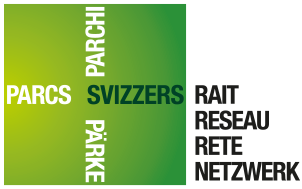Categories & missions
Minimum area:
National parks of new generation
Core zone
in the Alps: min. 100 km2
in the Jura and the south Alps: min. 75 km2
in the Swiss midlands: min. 50 km2
Buffer zone
must surround the core zone possibly in one piece
Regional nature park
The regional nature park is not divided into any zones.
Total area
min. 100 km2
The whole municipalities' territory is part of the park.
Nature discovery parks
Core zone
min. 4 km2
Buffer zone
min. 2 km2
Categories overview
The Swiss National Park is in the Engadine. Born in 1914, it has a long story and is regulated by its own law.
The other Swiss parks exist since 2008. They were created under the Federal Act on the Protection of Nature and Cultural Heritage (NCHA), which provides for three park categories:
Swiss National Park
The Swiss National Park is a wilderness area according to the International Union for Conservation of nature (IUCN). It meets the highest standards applying to nature reserves.
Not only do animal and plants benefit from high protection standards in wilderness areas, but tourism as well. Practically unspoiled nature and the unforgettable experience of animal watching attract many visitors to the Swiss National Park.
Goals:
- Safeguarding the free development of nature
- Environmental education and awareness-raising
- Research
National parks of new generation
Nature can develop on its own in the national parks' core zone. Sustainable traditional landscapes management is a must in the buffer zone, as well as the development of sustainable economic activities.
Not only do animals and plants benefit from high protection standards in wilderness areas, but tourism as well. Practically unspoiled nature and the unforgettable experience of animal watching attract many visitors to the Swiss National Park.
Goals:
In the core zone:
- Safeguard the free development of nature
In the buffer zone:
- Restrain any negative influences from reaching the core zone
- Near-natural management of the cultural landscape
- Promote a sustainable economy
In the whole park:
- Environmental education and awareness-raising
- Research
(Currently, there are no park projects in this category.)
Regional Nature Parks
The regional nature parks preserve traditional cultural landscapes and enhance their value. They stimulate the creation of added value according to sustainable development criteria. For instance, beautiful landscapes and an unspoiled nature are great assets for tourism. Finally regional nature parks also promote local farming and production.
Goals:
- Preserve and enhance cultural and natural landscape
- Promote a sustainable economy in the region
- Environmental education and awareness-raising
For biosphere reserves:
- Research
Nature Discovery Parks
Nature discovery parks are located near cities. They offer unspoiled habitats to the indigenous flora and fauna and allow the general public to experience nature. They offer special outdoor activities in their transition zones.
Goals:
In the core zone:
- Safeguard the free development of nature
In the transition zone:
- Prevent harmful instructions into the core zone
- Manage cultural landscapes in a near-natural manner
In the whole park:
- Environment education and awareness-raising
